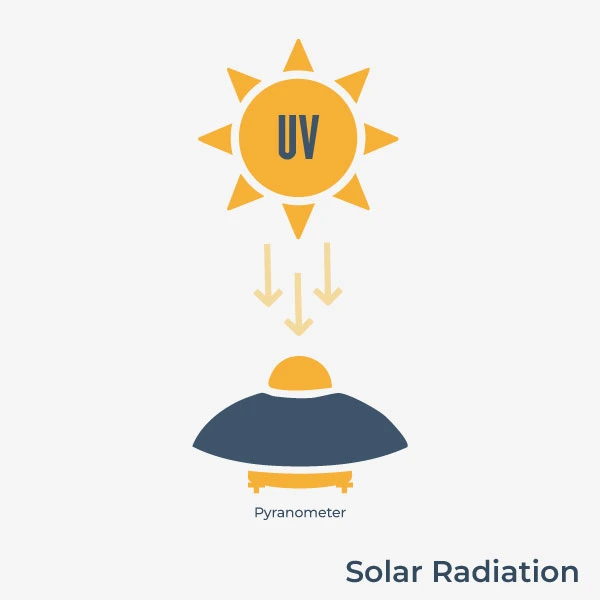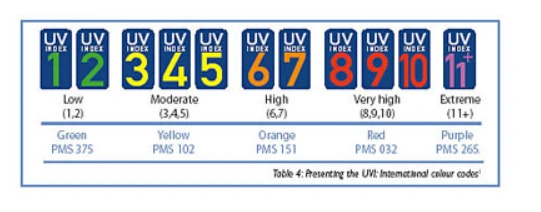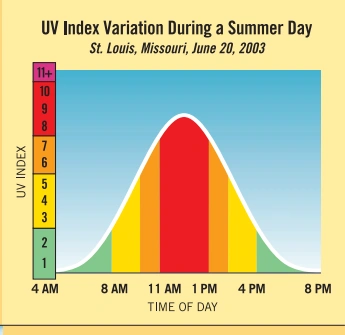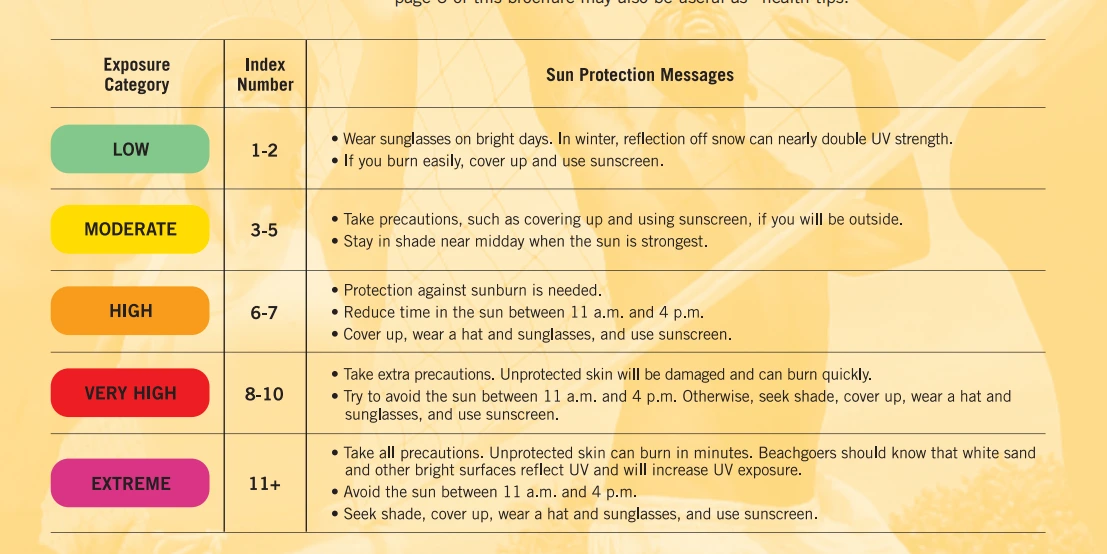Ultraviolet (UV) “light” is a type of electromagnetic radiation. UV light has a shorter wavelength than visible light. Purple and violet light has shorter wavelengths than other colors of light, and ultraviolet light has even shorter waves than violet does, so ultraviolet light is sort of “purpler-than-purple” light or “beyond violet” light. With wavelengths ranging from 10 to 400 nanometers (nm), UV radiation is divided into three main categories based on wavelength: UVA (315–400 nm), UVB (280–320 nm), and UVC (100–280 nm). Each type has distinct properties and applications, with varying levels of interaction with the Earth’s atmosphere.
UV radiation is a high-energy wave capable of breaking chemical bonds, making it a critical tool in sterilization, phototherapy, and industrial applications. UVC, for instance, is commonly used in germicidal lamps for its ability to destroy microorganisms by disrupting their DNA or RNA. Meanwhile, UVA and UVB contribute to natural processes like vitamin D synthesis but also pose risks, such as skin damage and increased cancer susceptibility, due to prolonged exposure. For environmental professionals, understanding UV radiation is key to tackling environmental challenges. Monitoring UV levels helps assess its effects on ecosystems, human health, and mitigation efforts. This article explores UV radiation, its sources, impacts, protective measures, and the methods used to detect and measure it.
1. What is UV Radiation (UV)?
Ultraviolet (UV) radiation has wavelengths between 100 and 400 nm, making it higher in frequency and shorter in wavelength than visible light. It naturally comes from the sun but can also be produced by artificial sources used in industries, businesses, and recreational activities.
UV radiation ranges from 100 to 400 nm and is divided into three types:
- UVA: Ultraviolet A Rays (315-400 nm)
- UVB: Ultraviolet B Rays (280-315 nm)
- UVC: Ultraviolet C Rays (100-280 nm)
As sunlight passes through the atmosphere, UVC and most UVB radiation (about 90%) are absorbed by ozone, water vapor, oxygen, and carbon dioxide. UVA, however, is less affected and makes up most of the UV radiation that reaches the Earth’s surface, with a small amount of UVB.
The amount of UV radiation hitting the Earth depends on factors like the sun’s position, latitude, cloud cover, altitude, ozone layer thickness, and ground reflection. Human-caused pollution has reduced the ozone layer, allowing more UVA and UVB to reach the surface. This increase can harm humans, animals, plants, and marine life. In humans, it can lead to skin cancer, cataracts, and weakened immune systems.
UV Radiation in Atmosphere
The Earth’s atmosphere acts as a natural shield, blocking most UV radiation from reaching the surface and keeping it from reaching the ground. UV-C is completely absorbed by the ozone layer about 35 km above the surface. UV-A, which causes minimal genetic damage, makes it through to the surface. UV-B, however, is the main cause of sunburn and skin cancer, but most of it is also absorbed by ozone before reaching us. The amount of UV-B at the surface depends heavily on how much ozone is in the atmosphere.
The amount of UV radiation that reaches the Earth depends on factors like the thickness of the ozone layer, altitude, and cloud cover. Human activities that damage the ozone layer, like pollution, allow more UV-B to reach the surface, increasing health risks for humans, animals, and plants.
2. Sources
Ultraviolet (UV) radiation is a type of non-ionizing radiation present in the environment, coming from both natural and man-made sources. While it helps in processes like Vitamin D production, excessive exposure can pose health risks.
Natural source:
The primary natural source of UV radiation is the sun. It emits all types of UV rays (UVA, UVB, and UVC), but the Earth’s atmosphere filters out most harmful UVC and a portion of UVB, leaving mainly UVA to reach the surface.
Man-made sources in ambient air:
Artificial sources of UV radiation that contribute to ambient levels include:
- Industrial emissions from mercury vapor lights and UV disinfection systems.
- Tanning beds that release UV rays into indoor spaces.
- Outdoor lighting, such as some halogen, fluorescent, and incandescent lamps.
- Laser technologies are used in industrial or scientific applications.
Understanding these sources is crucial for monitoring and managing UV exposure in the air we breathe.
3. What is the UV Index (UVI)?
The Ultraviolet Index (UVI) is a scale from 1 to 11+ that shows how strong UV rays are during the day and their potential to harm your skin.
The monitoring ambient UV radiation tells you the level of UV rays in your area around noon when the sun is usually at its peak. The higher the number, the stronger the UV rays and the greater the risk of skin damage. The World Health Organization (WHO) has developed an internationally recognized system of colors corresponding to levels of the UVI.
| Category | UVI Range | Color |
| Low | 0-2 | Green |
| Moderate | 3-5 | Yellow |
| High | 6-7 | Orange |
| Very High | 8-10 | Red |
| Extreme | 11+ | Purple |
Source https://www.who.int/news-room/questions-and-answers/item/radiation-the-ultraviolet-(uv)-index#:~:text=What%20is%20the%20UV%20index,takes%20for%20harm%20to%20occur
Source: https://www.epa.gov/sites/default/files/documents/uviguide.pdf
4. Health & Environmental Impact of UV Radiation
The sun is the main source of UV radiation, and it can reach you in three ways: directly from the sun, scattered through the sky, or reflected off surfaces around you. When the ozone layer gets thinner, it reduces the atmosphere’s natural protection against harmful UV rays. By understanding these risks and taking simple precautions, you can enjoy the sun while keeping yourself safe from UV-related health issues.
Health Effects:
- Sunburn is a sign of short-term overexposure, while premature aging and skin cancer are side effects of prolonged UV exposure.
- UV exposure increases the risk of potentially blinding eye diseases if eye protection is not used.
- Overexposure to UV radiation can lead to serious health issues, including cancer.
- There are numerous forms of artificial UV radiation sources, some of which produce significant levels of UV radiation. Arc welders used in industry emit a high level of UV radiation, and workers exposed to welding radiation may experience comparable health impacts as workers exposed to excessive solar UV radiation.
Did you know this? Each year, more new cases of skin cancer are diagnosed in the U.S. than new cases of breast, prostate, lung, and colon cancer combined. One in five Americans will develop skin cancer in their lifetime. One American dies from skin cancer every hour. Unprotected exposure to UV radiation is the most preventable risk factor for skin cancer.
Environmental Impacts:
Ultraviolet (UV) radiation doesn’t just impact humans; it affects wildlife too. Too much UV-B can slow the growth of almost all green plants. This raises concerns that ozone depletion could lead to the loss of plant species and a decrease in the global food supply. Since all life is connected, changes in plant diversity can have serious ripple effects. Plants are the foundation of the food chain, help prevent soil erosion and water loss, produce oxygen, and store carbon dioxide, making them essential for life on Earth.
In aquatic ecosystems, UV exposure harms phytoplankton, the foundation of the marine food chain, disrupting life under the water.
UV radiation also contributes to air quality challenges. It accelerates the formation of ground-level ozone, a key component of smog, which affects human health and the environment.
5. Possible Corrective Measures
Addressing the impact of UV radiation requires a combination of proactive and practical measures.
- First, protecting the ozone layer is crucial. Reducing the use of ozone-depleting substances like certain aerosols and refrigerants can help restore this natural shield against harmful UV rays.
- For individuals, simple steps like wearing sunscreen, UV-protective clothing, and sunglasses can reduce the risk of UV exposure.
- Limiting time outdoors during peak sunlight hours and seeking shade are also effective ways to stay safe.
- On a larger scale, promoting awareness about the effects of UV radiation and supporting policies for sustainable practices can make a significant difference.
- Watch the UV Index. The UV Index provides important sun safety information to help people plan outdoor activities.
- Be extra careful around water, snow, and sand. These surfaces reflect the sun’s harmful rays, making sunburn more likely.
Source: https://www.epa.gov/sites/default/files/documents/uviguide.pdf
6. Measurement methods of UV Radiation
Accurately measuring UV radiation is important to understand its effects on health, the environment, and industries. UV sensors are the main tools used to measure. They work by turning UV radiation into electrical signals, making it easy to monitor its intensity.
Photodiode Sensors: A photodiode-type UV sensor measures illuminance. When light strikes the photodiode, it energizes the electrons, which causes an electric current. The electric current will be stronger in response to brighter light. The electrical current can then be measured and transformed into a digital or analog output.
Photodetector: A key type of photodetector is the photovoltaic cell, which produces a voltage based on the intensity of electromagnetic (EM) radiation it receives. These sensors are called photovoltaic cells because they generate voltage, but their main function is to convert EM energy into electrical energy. They play an important role in instrumentation and control systems, serving as light detectors and as power sources that turn solar energy into electricity for remote-measuring systems.
The cell is a large exposed diode that is constructed using a pn junction between appropriately doped semiconductors. Photons hitting the cell pass through the thin p-doped upper and are absorbed by electrons in the n-doped layer. This causes conduction electrons and holes to be created.
Pyranometer: A pyranometer is a sensor that measures sunlight’s power, or solar irradiance, in watts per square meter (W/m²). It’s commonly used in meteorology, solar energy studies, agriculture, and climate research to track solar radiation.
The core component of the Pyranometer is a spherical glass enclosure equipped with a thermopile or photoelectric element, which is capable of converting the received solar radiation into an electrical signal. When the sun’s rays hit the Pyranometer’s receiver directly, the receiver absorbs the solar radiation and converts it into heat. This thermal energy causes the temperature of the receiver to rise, which changes its resistance value. By measuring this change in resistance value, the intensity of solar radiation can be calculated.
This pyranometer is highly accurate and supports inspections. It is widely used in fields like solar energy, weather monitoring, agriculture, building material testing, and air pollution studies to measure solar radiation.
Spectrometers or Spectroradiometers: Spectral radiation refers to the intensity of radiation from a source (like the sun, lamps, or reflected surfaces) across different wavelengths. Each radiation source has a unique spectrum, which helps characterize it under varying conditions.
Spectrometers measure the relative spectral radiation over a specific wavelength range. On the other hand, spectroradiometers are calibrated spectrometers that provide absolute measurements, such as energy flux (W/m²/nm) or photon flux (µmol/m²/s/nm).
7. Oizom’s Sensor Working Principle for UV Radiation
Oizom’s UV Radiation Sensor Module is designed to accurately measure solar radiation in the surrounding environment. This real-time sensor helps monitor the intensity of solar rays, providing valuable insights into UV radiation levels. A high UV Index, detected by the sensor, indicates potential harm to human health. Additionally, this data can be used to study diurnal air quality fluctuations and their correlation with sunlight and UV radiation.
The sensor operates on the principle of photoconductivity, where its conductivity changes in response to light intensity. Developed in-house by Oizom, this innovative sensor technology ensures precise and reliable measurements.
The module is commonly used in climatological research, meteorological networks, greenhouses, building automation, reflectance studies, weathering, and monitoring the performance of weather stations. With its robust design and advanced technology, Oizom’s UV Radiation Sensor plays a key role in supporting accurate and actionable environmental data analysis.
8. Why Choose Oizom UV Radiation Sensor?
- Oizom’s UV Radiation Sensor provides accurate and consistent measurements, making it ideal for real-time monitoring and research applications.
- Built with advanced photoconductivity technology, the sensor delivers reliable and high-performance results for various environmental applications.
- The UV radiation sensor has a long life of almost three years.
- Engineered for durability, the sensor performs effectively in extreme weather conditions, ensuring long-term reliability and minimal maintenance.
- Offers accurate real-time data on UV radiation and light intensity, supporting timely decision-making.
- Our sensors comply with the RoHS criteria for restricting hazardous substances in electrical and electronic devices.
9. Reasons Why UV Radiation Masuring is Important:
- Monitoring UV radiation helps protect against its harmful effects, such as skin cancer, sunburn, and eye damage like cataracts. Understanding UV levels allows individuals and communities to take preventive measures and reduce health risks.
- UV radiation plays a critical role in ecosystems. Excessive UV exposure can harm plant growth, damage phytoplankton in aquatic ecosystems, and disrupt the food chain. Monitoring UV levels helps assess its impact on the environment and biodiversity.
- Measuring UV radiation provides insights into the health of the ozone layer. Increased UV-B levels at the surface indicate ozone depletion, which requires action to protect this critical atmospheric shield.
- UV radiation influences air quality by driving photochemical reactions that produce ground-level ozone and smog. Measuring UV levels helps us understand these reactions and their impact on pollution and public health.
- UV radiation is a component of solar energy that affects climate systems. Measuring it supports climate studies and optimizes solar energy systems by providing data on sunlight intensity and its variations.
FAQs
What is UV radiation, and why is it important?
UV radiation is a type of electromagnetic radiation emitted by the sun and artificial sources. It is essential for natural processes like Vitamin D production but can also be harmful, causing skin damage, eye problems, and affecting ecosystems.
How does UV radiation impact the environment?
UV radiation affects ecosystems by damaging plants, reducing crop yields, and harming aquatic life like phytoplankton. It also influences air quality by driving photochemical reactions that create smog.
What are the health risks of UV radiation exposure?
Excessive UV exposure can lead to sunburn, skin cancer, premature aging, eye damage (like cataracts), and weakened immunity. Taking protective measures is crucial to minimize these risks.
Why is it important to monitor UV radiation levels?
Monitoring UV radiation helps assess health risks, study ozone layer depletion, understand its effects on air quality, and ensure safety in agriculture, energy, and environmental research.
What tools are used to measure UV radiation?
UV radiation is measured using sensors like pyranometers, spectrometers, and spectroradiometers. These tools provide real-time data for research, environmental monitoring, and public safety.







